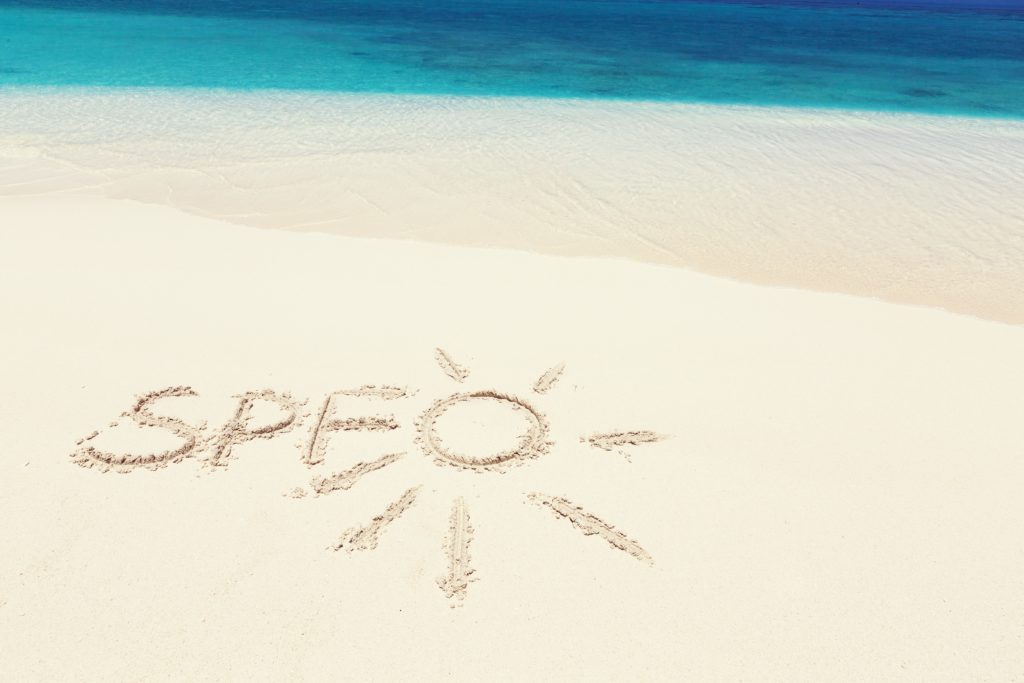You already know that you need to apply SPF (or sunscreen) daily, but unlike a cleanser or moisturiser, this skincare step comes with a few extra crucial rules. From the amount to use, to how often you should reapply it, the SPF questions are seemingly endless. So, let’s get to it: here are the year-round sunscreen facts you need to know…
First up, what does SPF mean?
SPF is short for ‘sun protection factor’ and the number you see straight after it – for example, SPF50 – tells you how long you can wear it before skin will start to burn. It doesn’t account for minutes, but rather the relative amount of time it takes to burn protected skincare compared to unprotected skin. This number can range anywhere from 2 to 100, and the higher the figure, the better your skin is protected from those harmful rays.
What is broad-spectrum SPF?
A broad-spectrum sunscreen is one that protects you from both UVA and UVB rays. UVA rays (or long-wave ultraviolet A rays) go deep down into the dermis, where they cause skin ageing and wrinkles, while UVB rays (or short-wave ultraviolet B rays) are responsible for burning both the dermis and the top layer of skin. Or, to put it simpler:
UVA protection shields your skin against the ageing rays.
UVB protection shields your skin against the burning rays.
It’s important you use a sunscreen that protects against both to keep your complexion safe and healthy. All of the SPFs featured here give you that broad-spectrum protection.
What is water-resistant SPF?
Thankfully, a lot of sunscreens these days are water-resistant, which means that if you’re getting in and out of the pool or sea, they’re not going to instantly disappear. However, it’s important to note the difference between water-resistant and water-proof. They’re not invincible in the face of water, so you still need to reapply when you return to the sunlounger.
How much SPF do I need?
The amount of sunscreen needed will vary from person to person, as we’re all different sizes. However, as a general rule of thumb, you should use a minimum of two to three tablespoons of sunscreen to cover your body, and a further two tablespoons for your face. When in doubt, know that more is always more when it comes to keeping skin protected. Reapply every two hours to keep your SPF topped up.
How do I choose SPF?
Typically, we recommend reaching for the highest SPF you can possibly find, because it means you won’t have to reapply as often and your skin will stay shielded for longer. However, if you know you don’t burn very quickly and your skin isn’t sun-sensitive, you can start with a daily application of SPF30. Just make sure you keep the bottle in your bag for touch-ups. And, top tip: avoid those drugstore SPF10 tanning oils like the plague; they’re a one-way ticket to scorched skin and sun damage that you’re bound to regret later on.
Which SPF is best for your face?
Because you apply SPF over the top of face serum and moisturiser, you want it to be smooth and light, so it won’t make your skin feel greasy or block your pores. Here just some of our favourite face sunscreens to keep pores protected…
For a dewy, healthy glow: SkinCeuticals Bright UV Defense SPF30
If you’re all about radiant skin, this light and luminous lotion is a must. As well as shielding pores against UVA and UVB rays with SPF30, it deeply hydrates to leave dry, dull complexions looking positively glowy. Apply over moisturiser for a soft, supple finish.
For flawless makeup application: ZO Sunscreen + Primer SPF30
A primer and sunscreen in one? We’re sold. This weightless hybrid lotion teams a smooth, velvety-matte finish with a boost of SPF30 to help your foundation and concealer glide on like a dream. Wear it as a base for makeup or alone for a non-greasy, quick-drying shield.
For on-the-go SPF top-ups: ZO Sunscreen + Powder SPF40
You don’t want to ruin your makeup every time you reapply your sunscreen. That’s why this featherlight power – with a built-in brush – is ideal for on-the-go protection. Lightly pigmented and packed with SPF40, it delicately sweeps over foundation and blush for an added veil of protection when you need it most.
Should I wear SPF in winter?
Yes x 1,000. While plunging temperatures don’t scream ‘basking in the sun’, those UV rays can still be powerful and cause unseen damage to your skin. This is especially true when it’s snowing (hello, ski season), as snow has the ability to reflect up to 80% of UV light, which boosts the power of the sun and your pores’ exposure. Don’t skimp on the factor either. Stick with a minimum of SPF30, and reapply it every two hours. Our picks are SkinCeuticals Bright UV Defense SPF30 in the morning to keep winter skin hydrated, and ZO Sunscreen + Powder SPF40 for top-ups throughout the day.
Up next: Discover the many benefits of a lymphatic drainage massage.




























